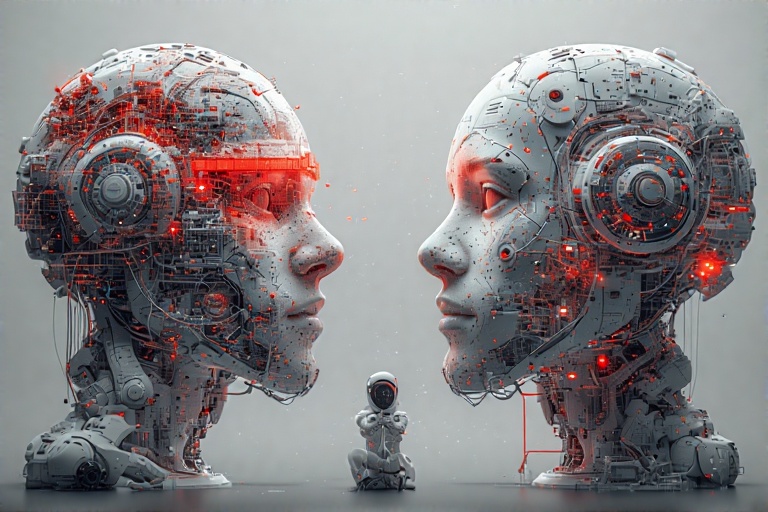Advances in artificial intelligence are shifting the nature of work from isolated tasks toward dynamic partnerships between humans and machines. Rather than replacing knowledge workers, AI now acts as a co-pilot—offering real-time suggestions, automating routine workflows and surfacing insights that would take weeks to uncover manually. This new model of augmented working blends human creativity, judgment and empathy with algorithmic speed, pattern recognition and scale. Organizations that master this synergy unlock productivity gains, accelerate innovation and build a workforce ready for tomorrow’s challenges.
Augmented Working Explained
Augmented working refers to the seamless integration of AI tools into daily tasks, where systems learn from user behavior and context to deliver tailored assistance. Instead of treating AI as a siloed project, companies embed intelligence directly into familiar applications—email platforms that draft responses, code editors that suggest entire functions and analytics dashboards that highlight anomalies before they become problems. The focus shifts from “what can AI do?” to “how can AI enhance what I already do?”
Key Pillars of AI-Augmented Work
- Interactive Co-pilots
Large language models and domain-specific assistants guide users through complex processes. They suggest phrasing changes in documents, recommend code snippets in development environments and propose data visualizations in spreadsheets.
- Automated Knowledge Discovery
AI crawls internal wikis, email archives and support tickets to surface relevant policies, past decisions and expert contacts. Workers spend less time searching and more time acting.
- Workflow Orchestration
Robotic process automation bots handle repetitive tasks such as invoice processing, report generation and transcription. Human oversight shifts toward exception management and continuous improvement.
- Intelligent Analytics
Predictive models scan financial, operational and customer data, alerting teams to emerging trends or risks. Decision thresholds can trigger automated responses or prompt human review when necessary.
- Adaptive Learning
Systems monitor user feedback—accepted suggestions, edits and overrides—and refine their recommendations over time. This closed-loop training ensures the AI grows more aligned with each team’s style and priorities.
Real-World Applications
Across industries, pioneers are already embedding AI into core workflows. Leading professional-services firms use generative models to draft client proposals, cutting initial writing time by as much as 50 percent. Financial teams rely on AI to reconcile statements and flag discrepancies overnight. Customer-support centers deploy sentiment analysis to route calls and suggest de-escalation scripts before supervisors intervene.
Let me show you some examples from teams that integrated AI into daily workflows:
- A software firm enabled developers with an AI co-pilot that suggests boilerplate code, reducing onboarding time for new languages from weeks to days.
- A healthcare provider uses natural-language processing to extract key metrics from patient records, allowing clinicians to focus on treatment rather than data entry.
- A retail chain deployed intelligent bots to monitor inventory levels and place restocking orders automatically, ensuring shelves remain stocked without manual checks.
Strategies for Adoption
Transitioning to augmented working requires more than installing tools. Successful rollouts follow a structured path:
- Identify high-value tasks. Map repetitive workflows and knowledge-intensive processes where AI can deliver immediate ROI.
- Choose the right partners. Evaluate platforms on integration ease, customization options and data-privacy compliance.
- Start with pilot groups. Empower small, cross-functional teams to experiment and provide feedback on usability and accuracy.
- Train and upskill. Offer workshops on AI fundamentals, prompt engineering and responsible use guidelines.
- Measure impact continuously. Track time savings, error reductions and user satisfaction metrics to guide further investment.
Challenges and Best Practices
- Building Trust
Users must feel confident in AI outputs. Transparent explanations of how suggestions are generated—and clear escape hatches—boost acceptance.
- Ensuring Data Privacy
Embedding AI into workflows often requires access to sensitive information. Strong encryption, on-premise options and data-anonymization techniques help maintain compliance.
- Avoiding Over-Automation
Not every task improves with AI. Balance automation with human judgment for decisions involving ethics, creativity or strategic risk.
- Closing the Skills Gap
Even the most intuitive tools demand a shift in mindset. Invest in ongoing training, peer mentoring and internal knowledge bases to nurture AI fluency.
Future Trends in Augmented Working
Advances in model architectures and voice interfaces will make AI assistance even more natural. Imagine digital assistants that join virtual meetings to capture action items, summarize discussions and assign tasks automatically. Augmented-reality overlays could guide field technicians through equipment repairs by projecting AI-generated instructions directly onto components. As models become more specialized, we’ll see industry-tailored co-pilots trained on proprietary data, enabling deeper domain expertise and tighter integration with existing systems.
Charting Your Next Steps
Augmented working is not a one-off project but an ongoing evolution. Start small, learn fast and iterate relentlessly. By weaving AI into the fabric of daily workflows, organizations can free human talent for higher-order thinking, spark creativity and adapt to change at digital speed. The future of work lies not in choosing between humans and machines but in unlocking their combined potential.







Add a Comment